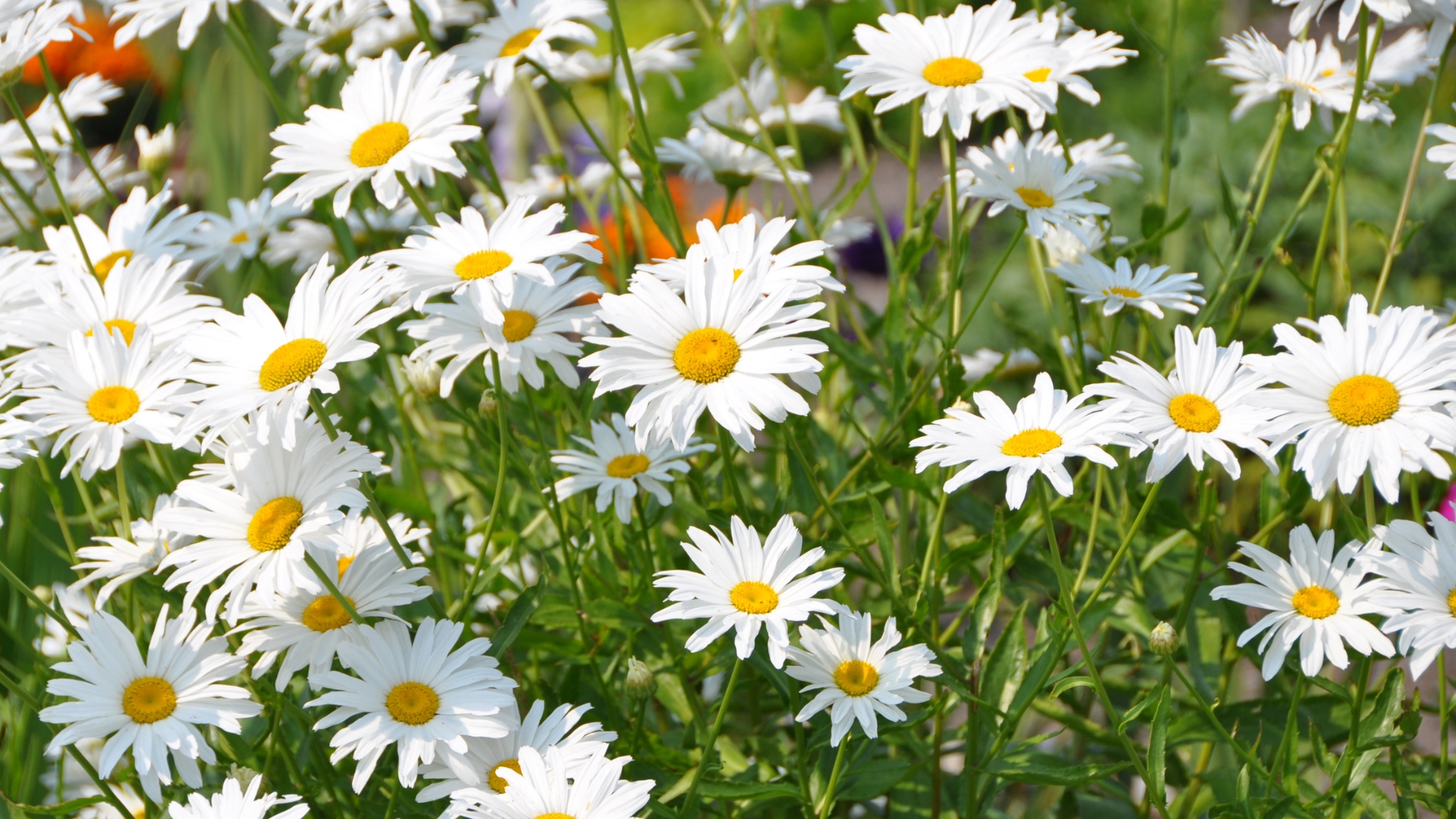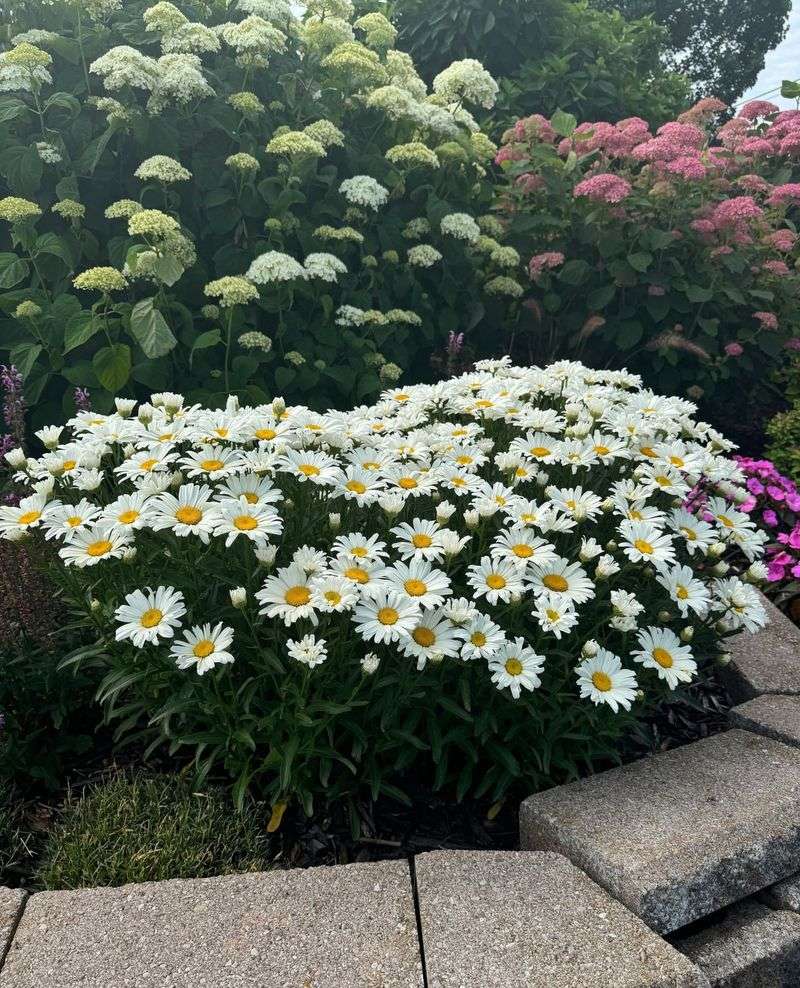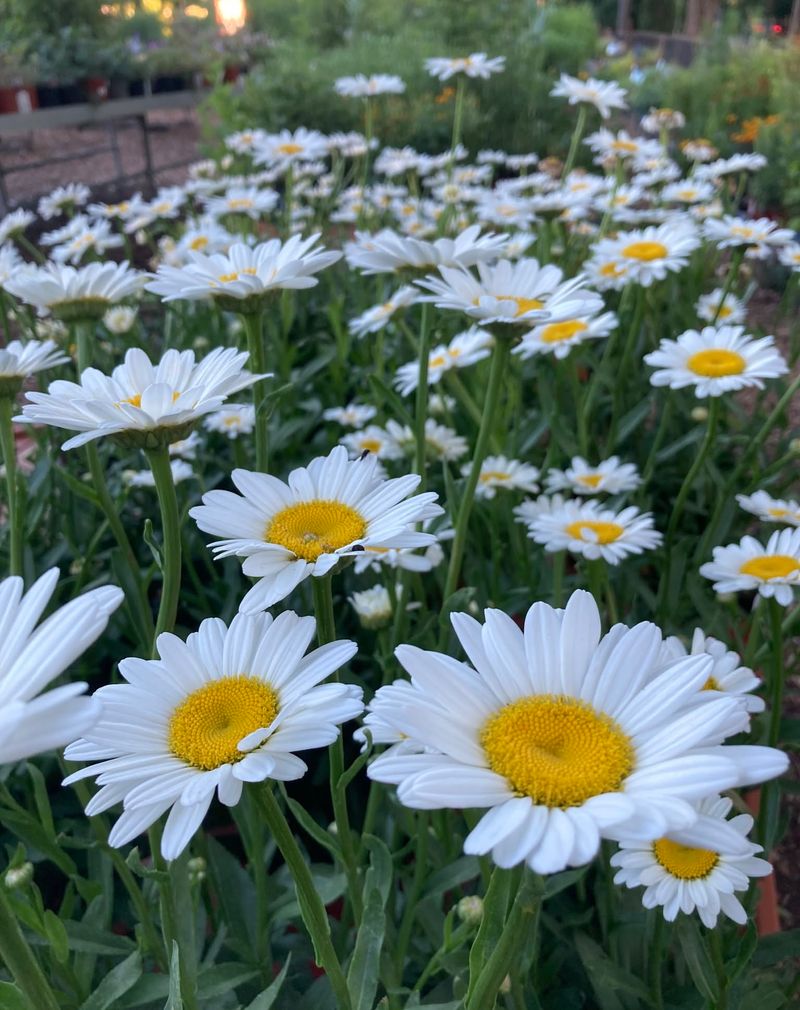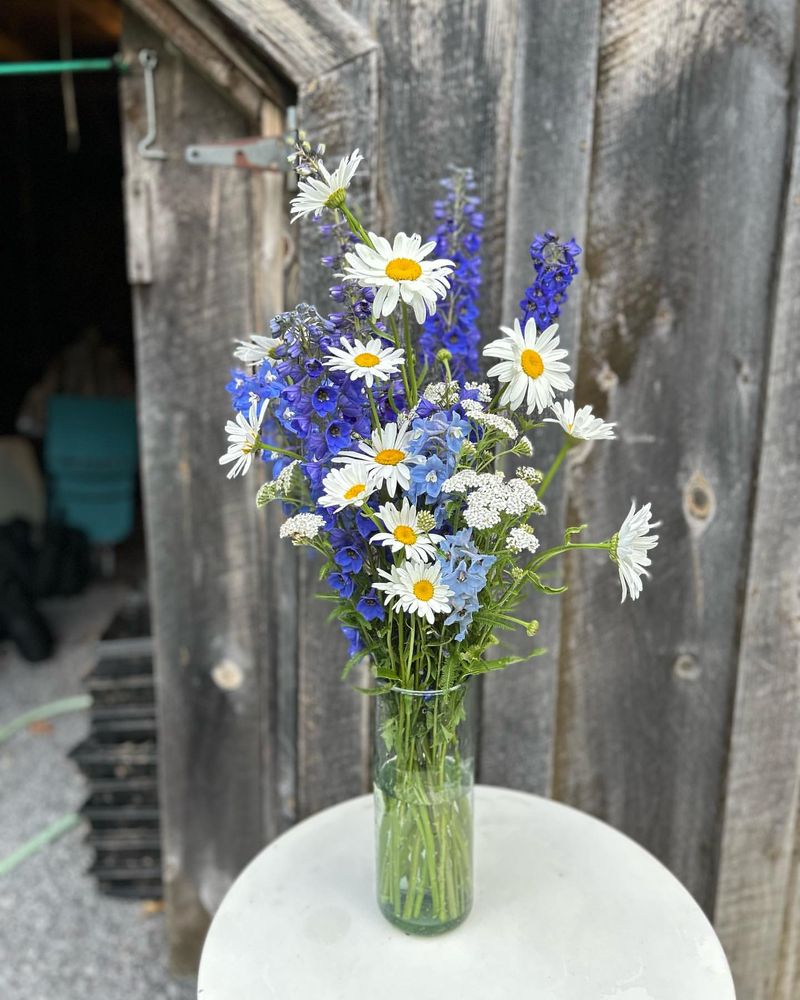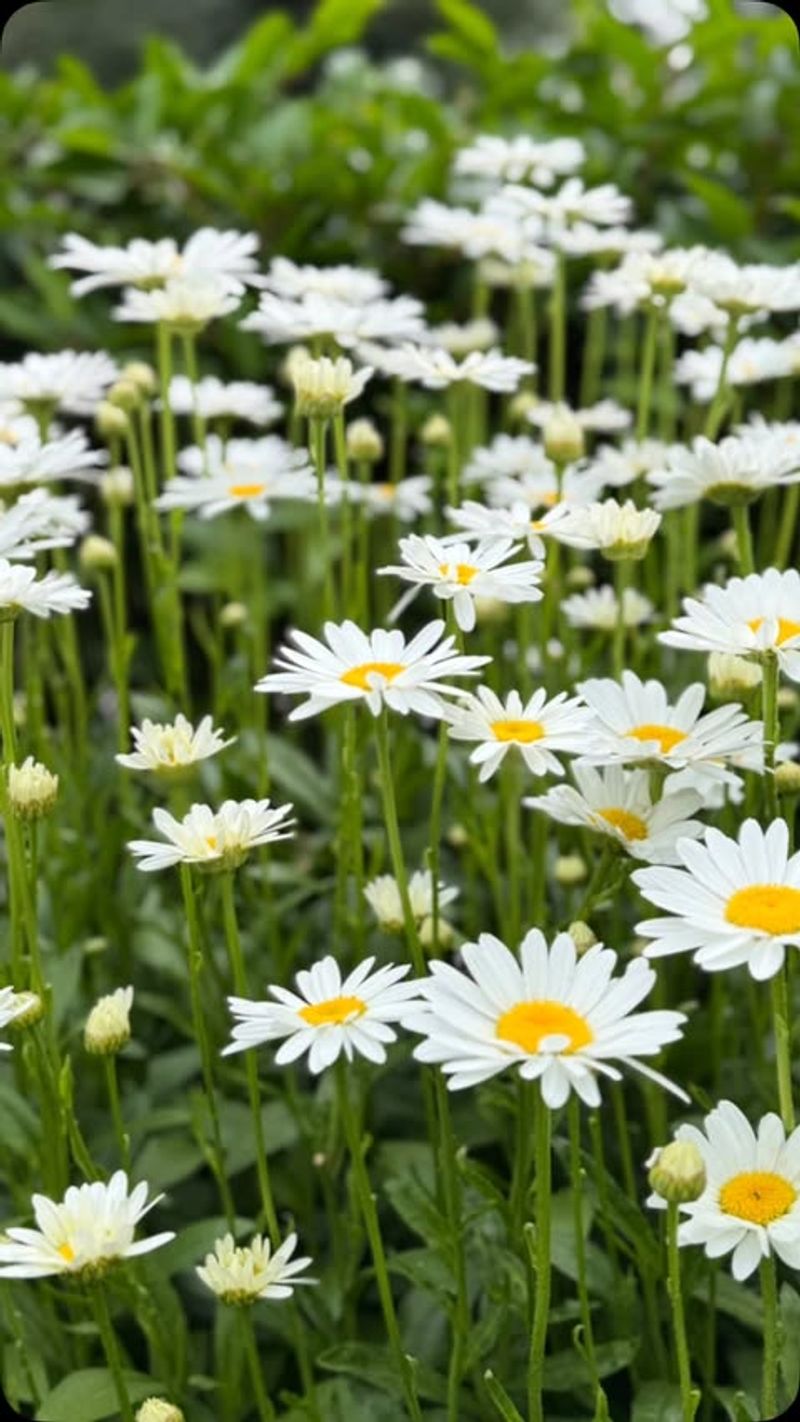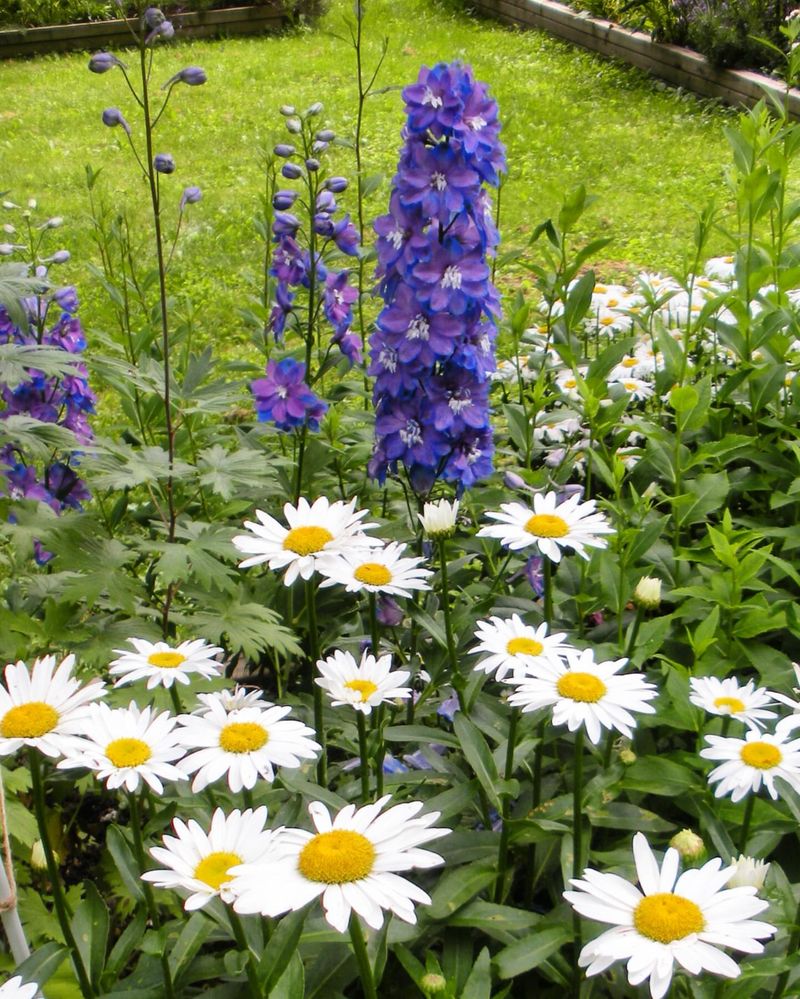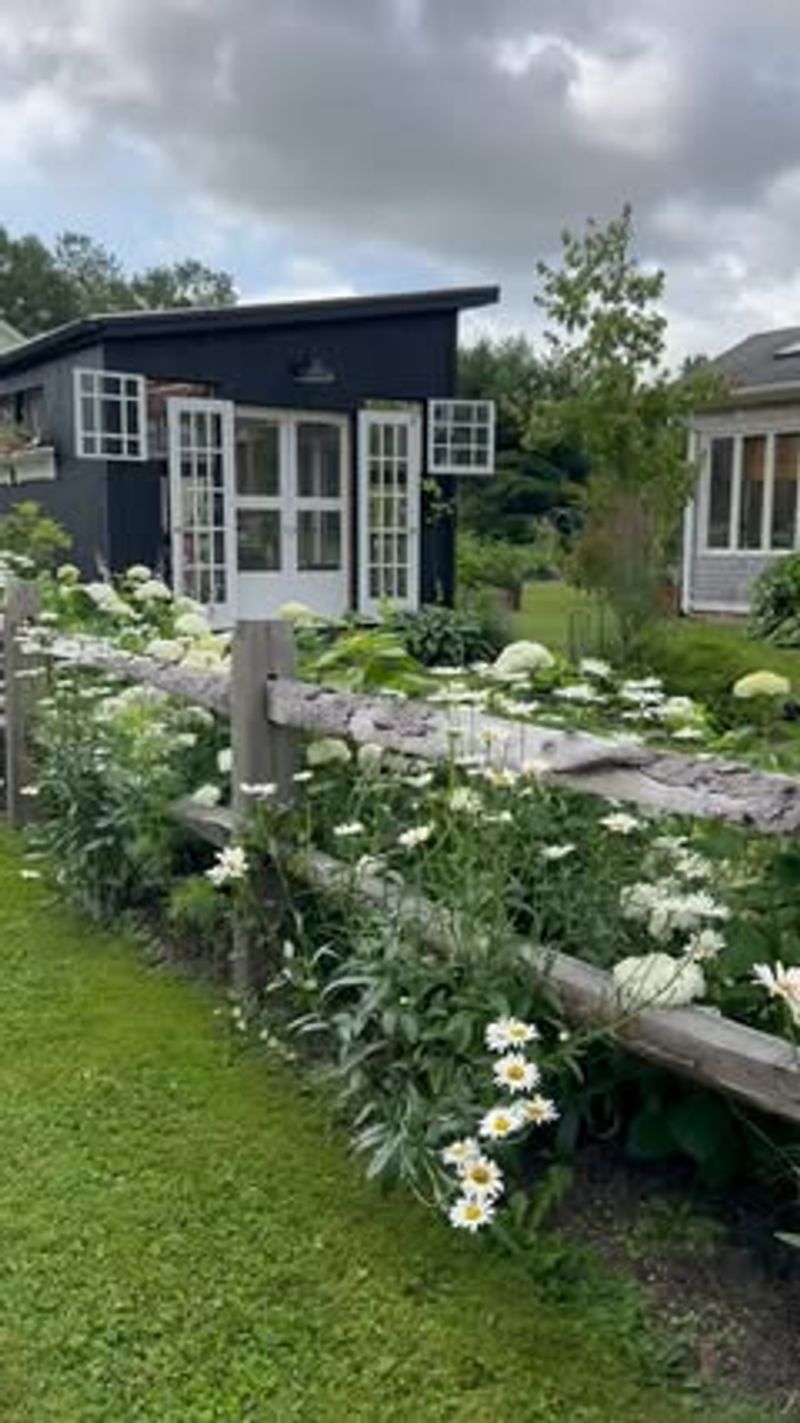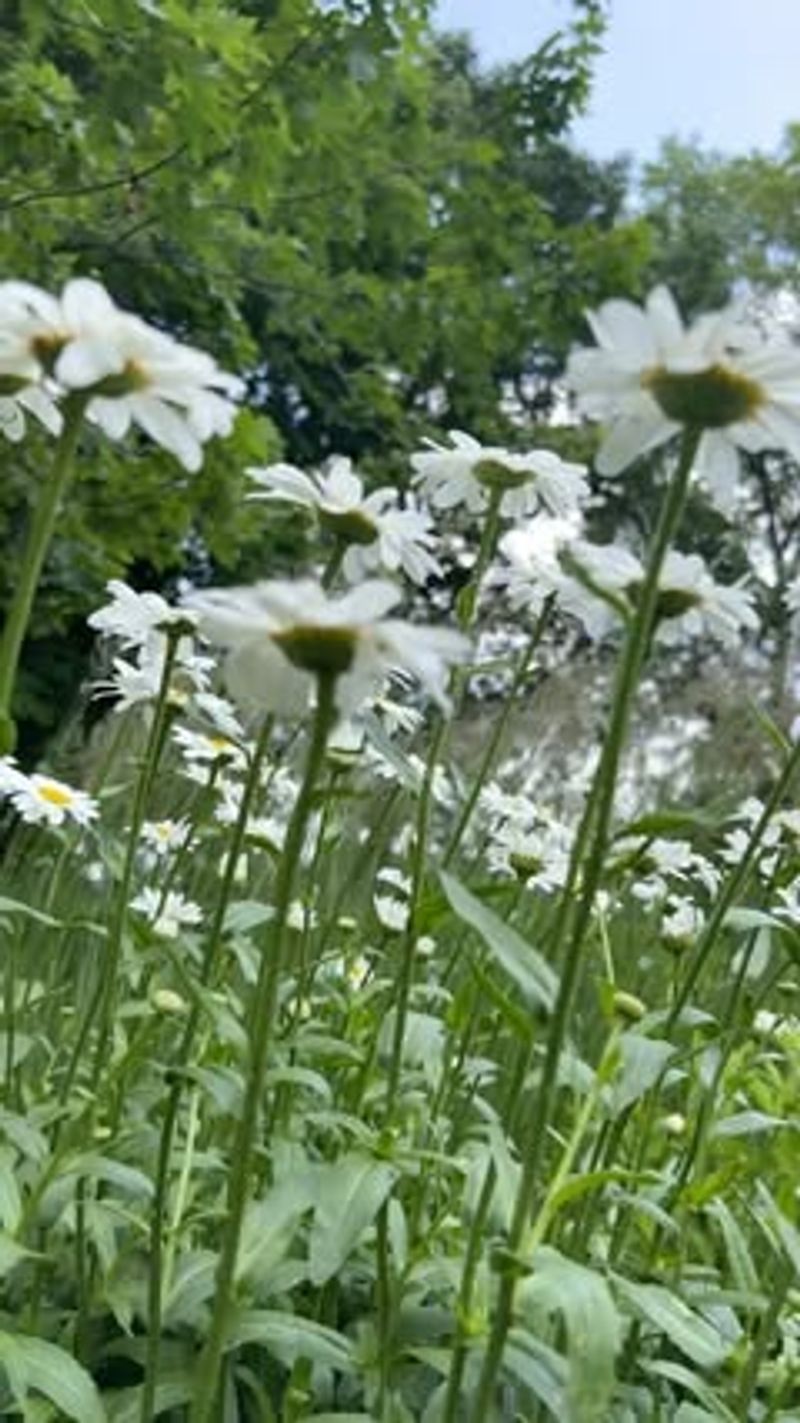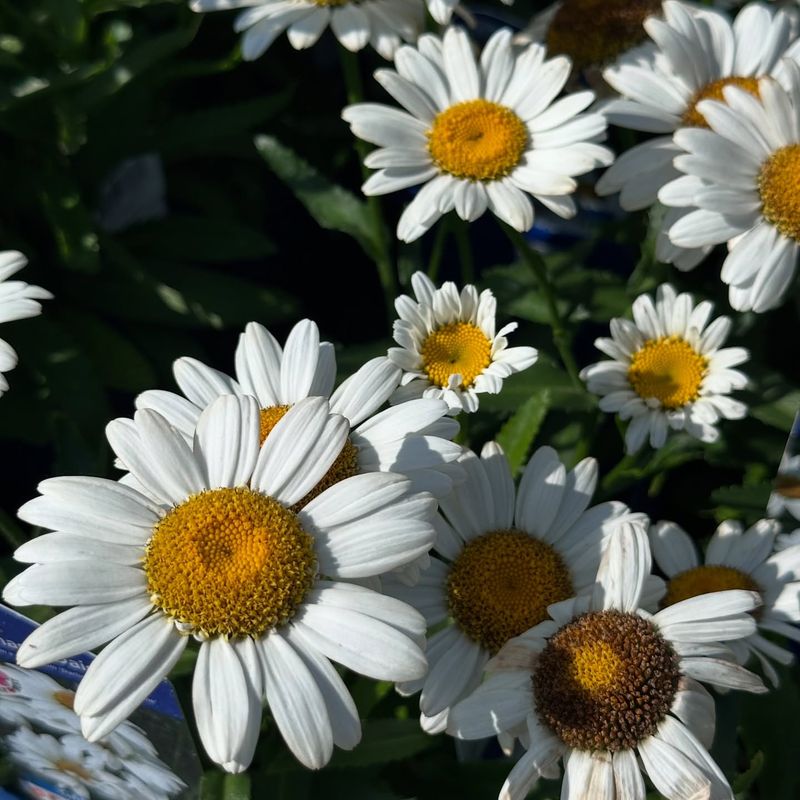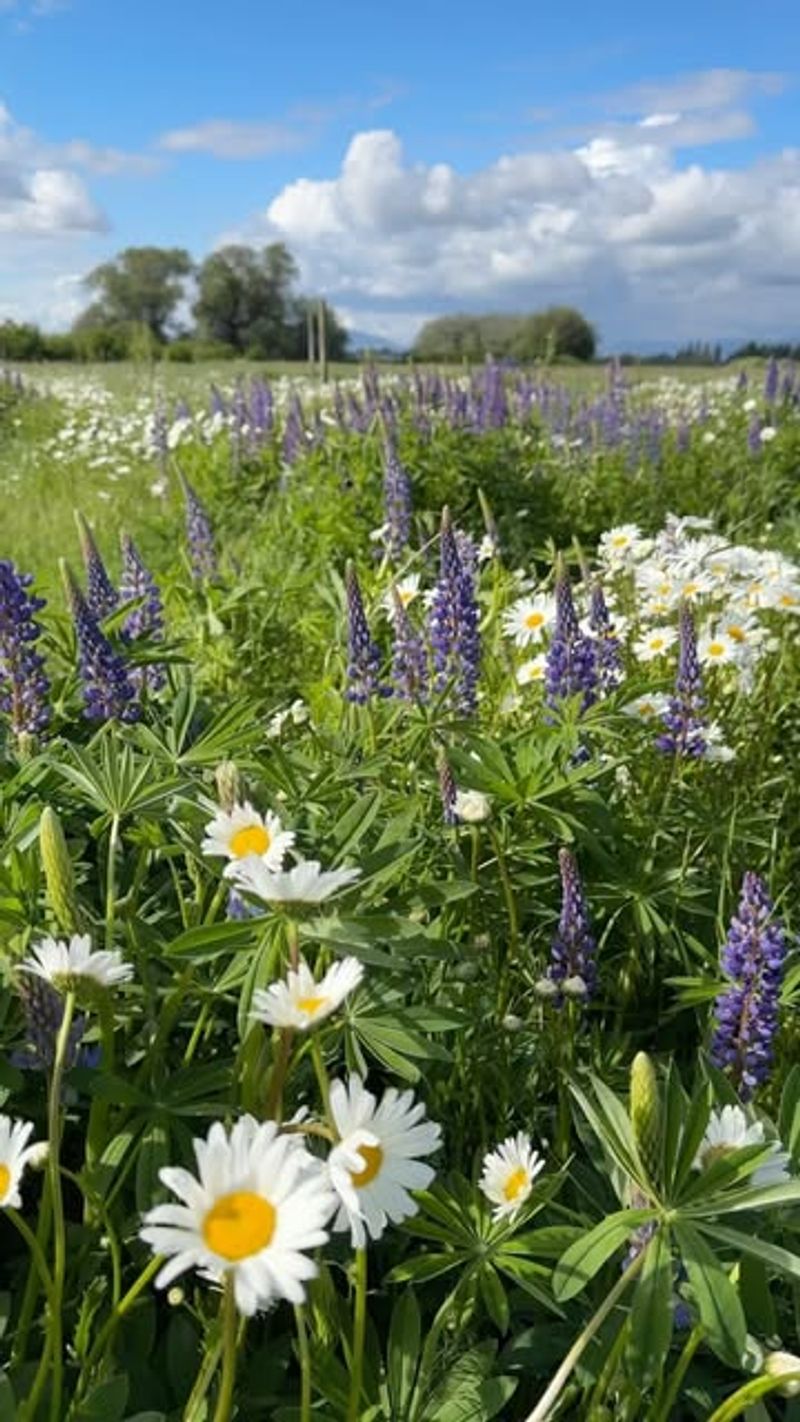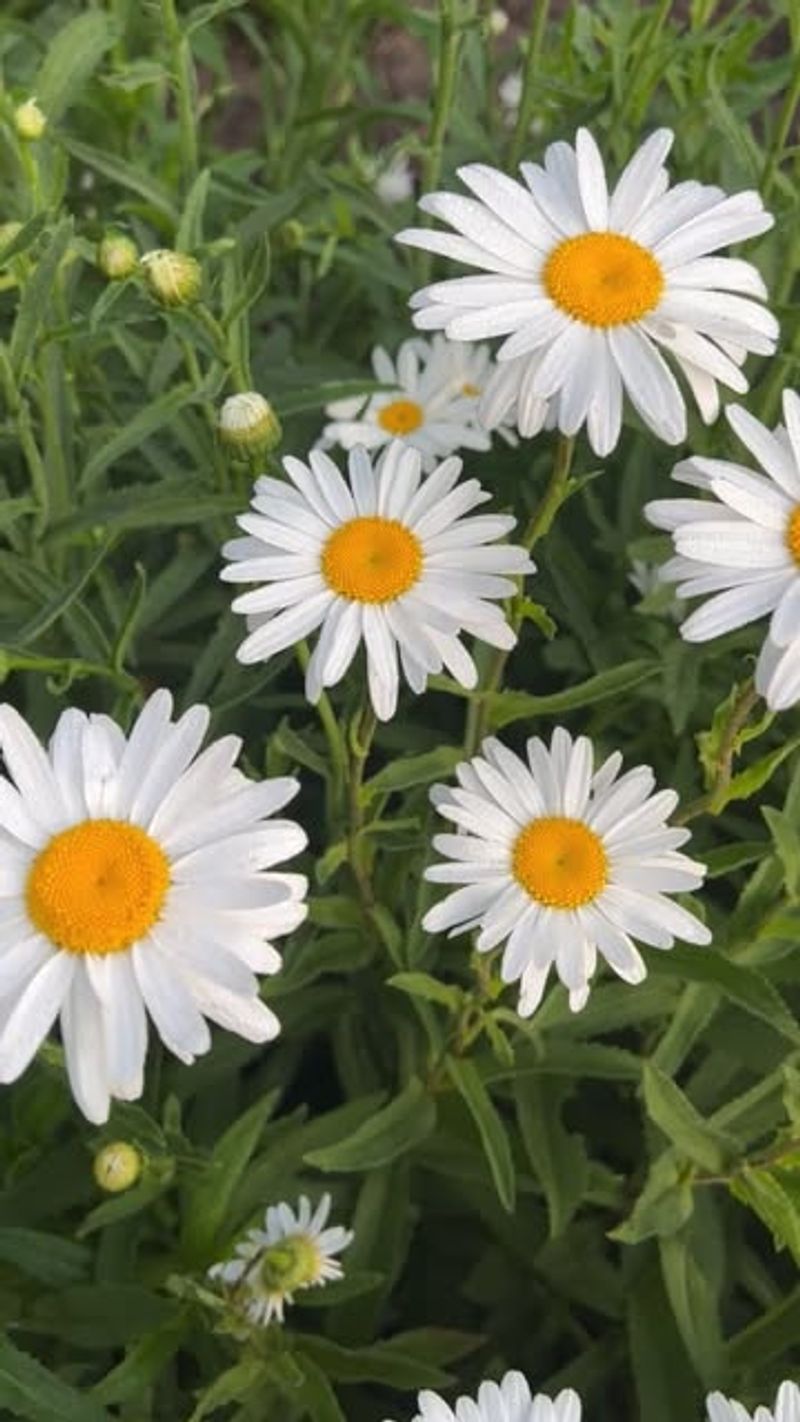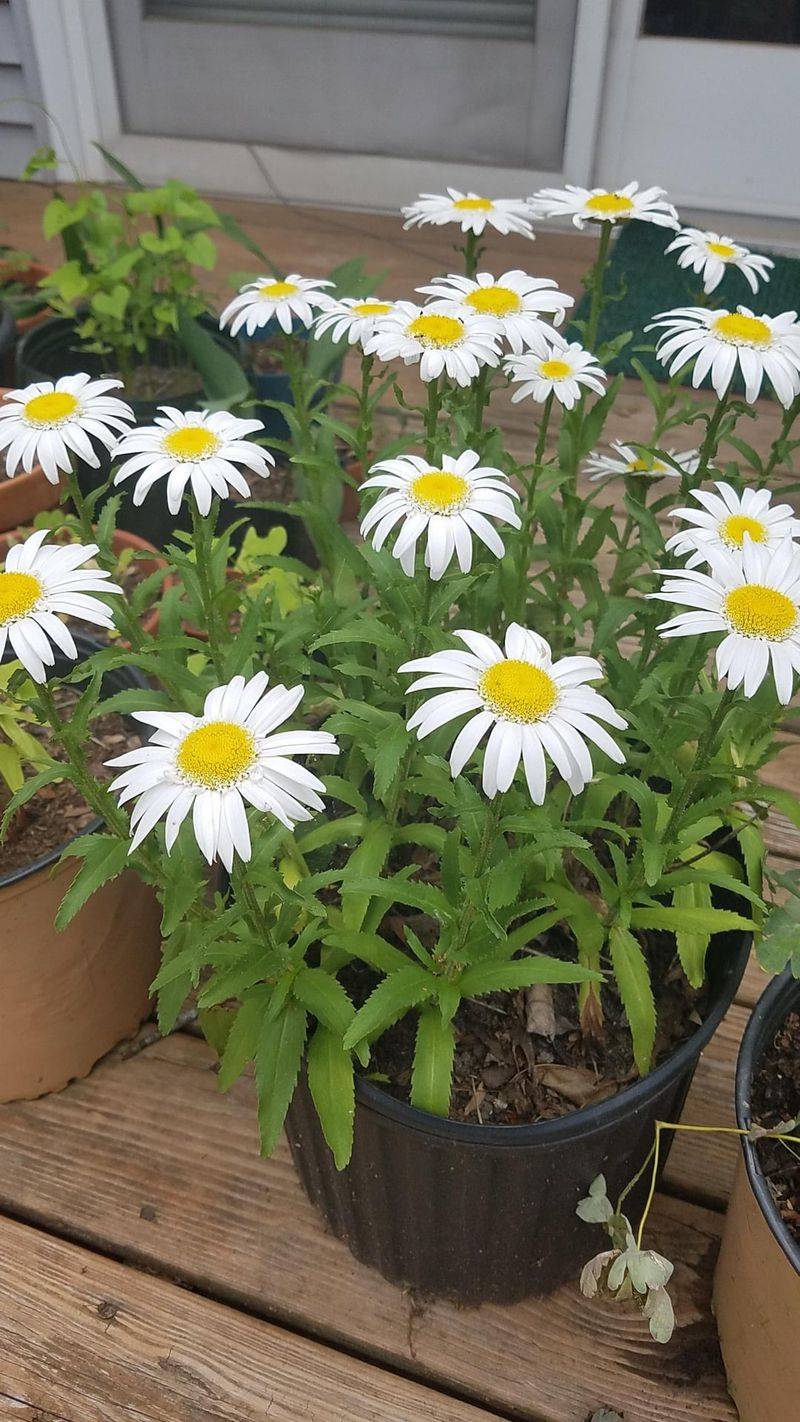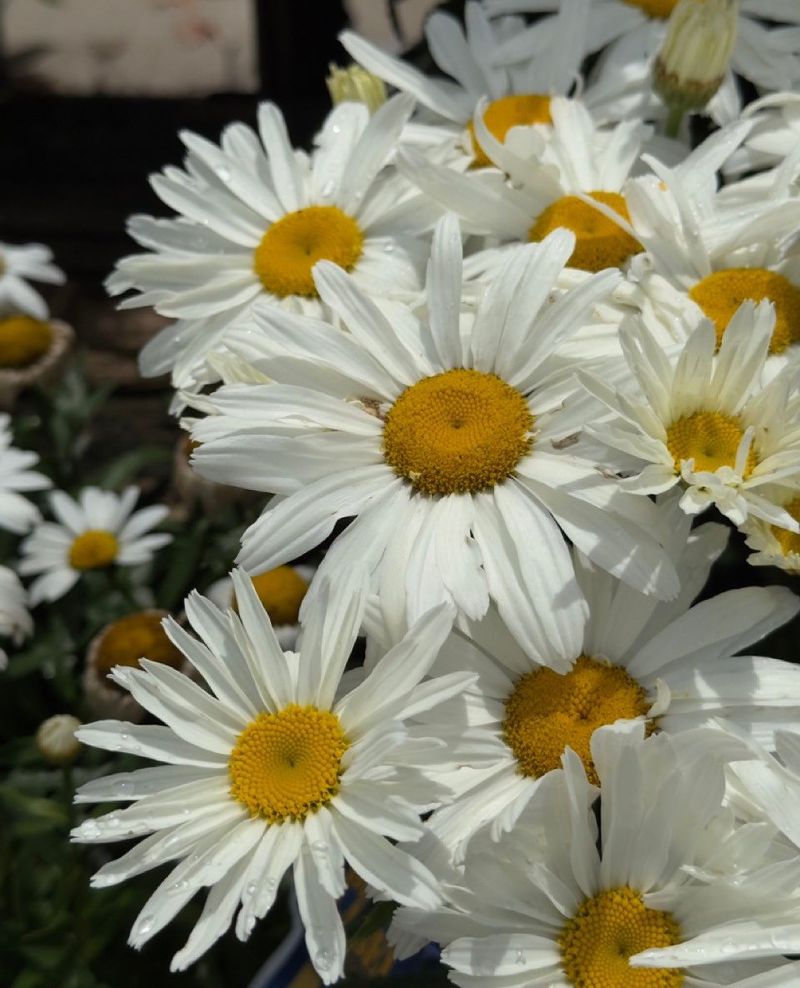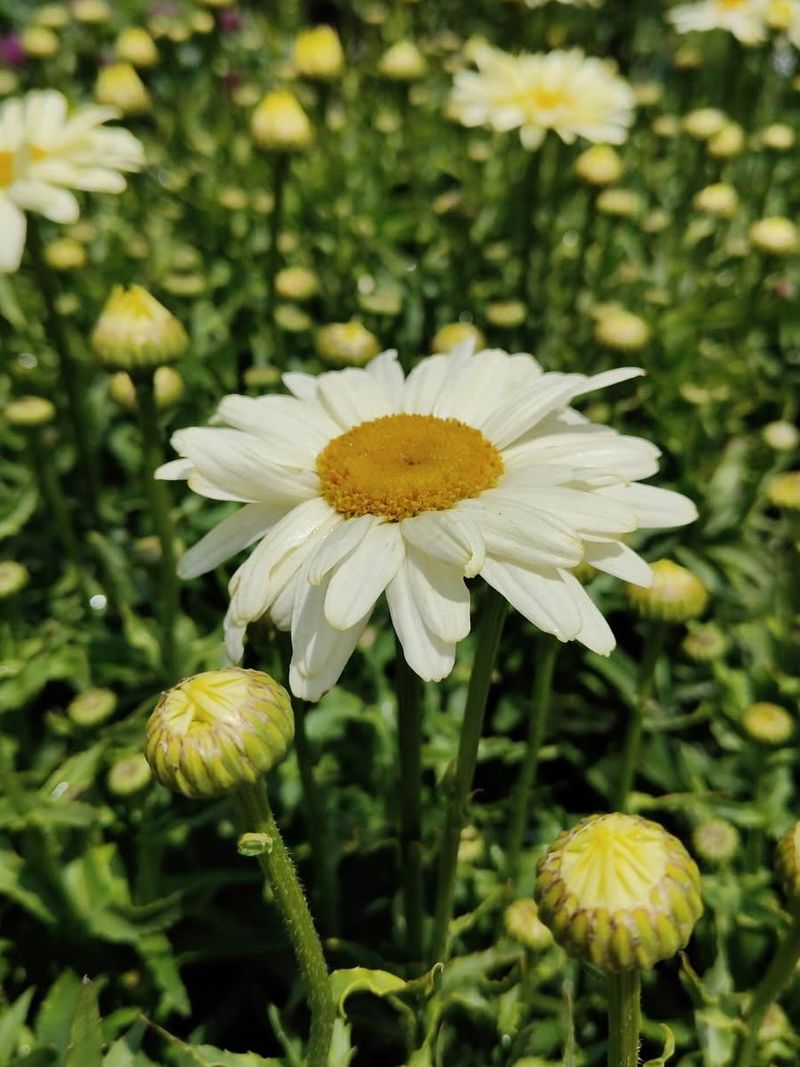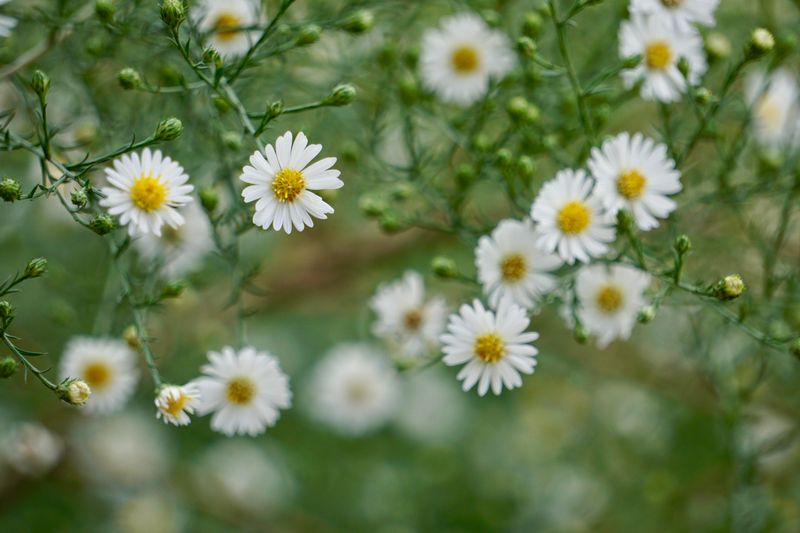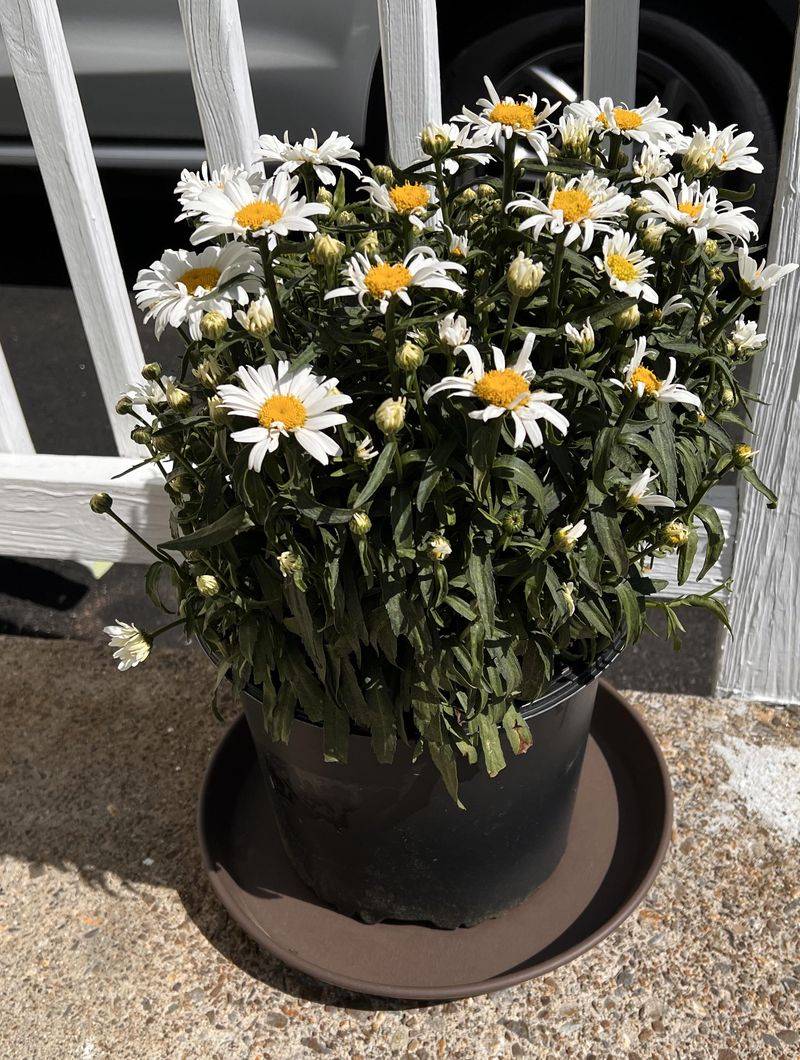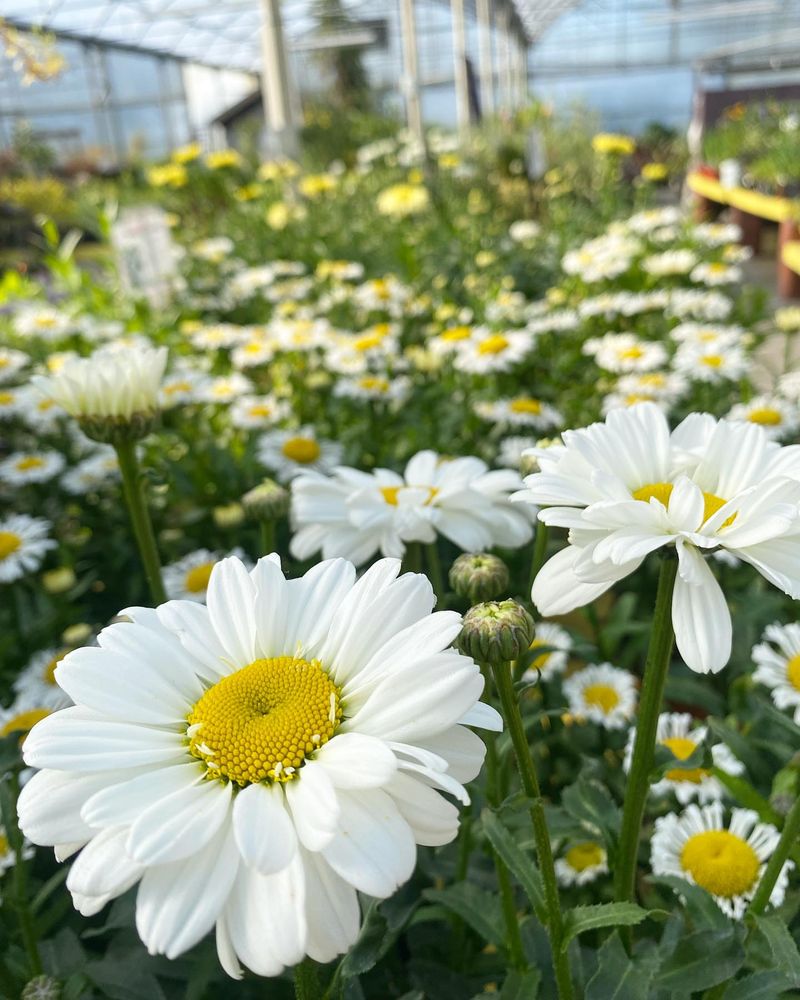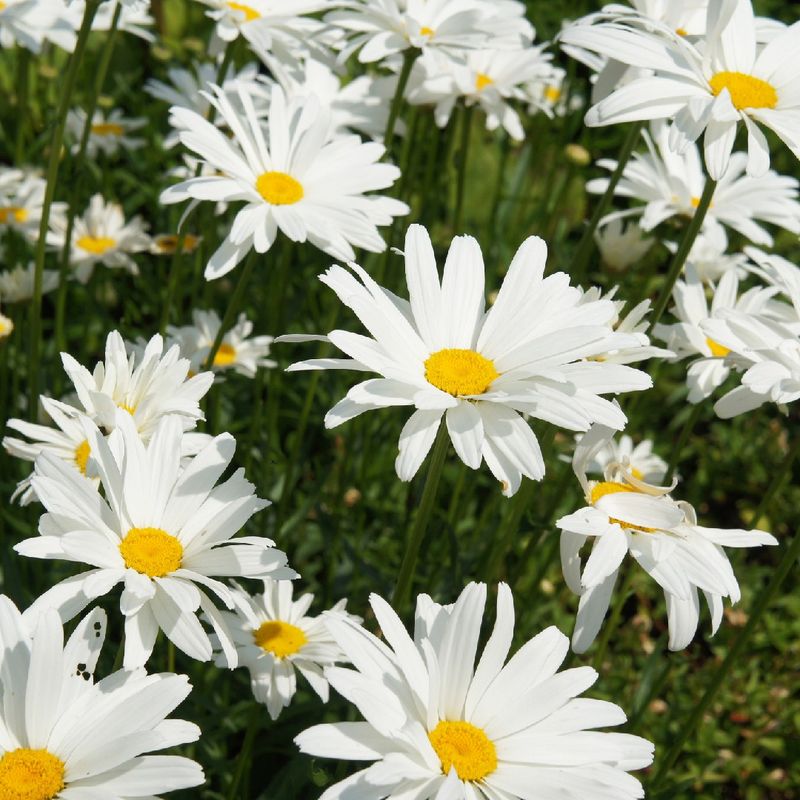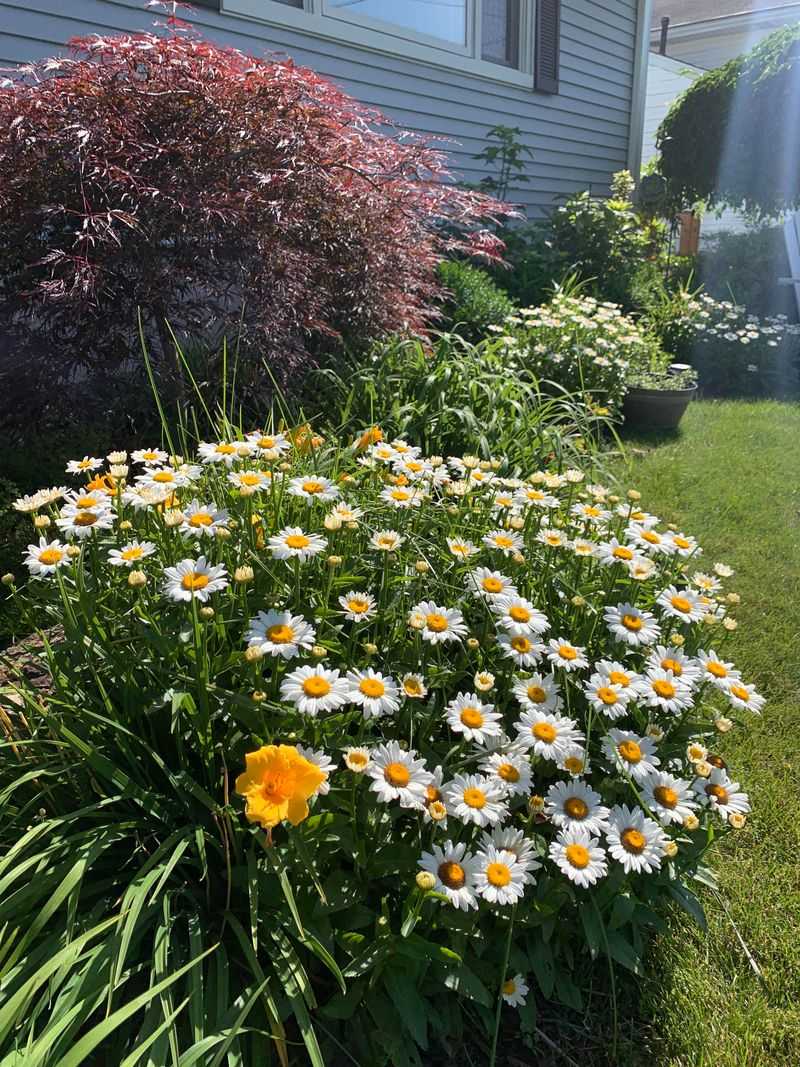Shasta daisies are cheerful, easy to grow, and they shine brightest in summer. Their bold white blooms with sunny yellow centers make any garden feel fresh and full of life. July is a great time to plant or enjoy them, especially if you want color that keeps going strong.
With just a little care, these daisies can light up your yard in the best way.
1. Vibrant Border Displays
Nothing says summer like a border of pristine white Shasta daisies standing tall against a fence or wall. Their crisp blooms create a clean line that makes other colors in your garden pop.
Plant them in groups of five or seven for the most natural-looking display. The contrast between their golden centers and white petals adds dimension to otherwise flat-looking garden spaces.
2. Butterfly Magnets
Watch your garden come alive as butterflies flock to your Shasta daisies! The flat landing pad of their flower heads makes them perfect pit stops for monarchs, swallowtails, and skippers seeking nectar.
Morning is the best time to catch this magical display as butterflies warm themselves in the sun while feeding. Consider planting daisies near a window or patio where you can enjoy the butterfly show with your morning coffee.
3. Cut Flower Arrangements
Fresh-cut Shasta daisies can last over a week in vases, bringing summer sunshine indoors. Their strong stems hold up well in arrangements, and their simple shape complements more complex flowers beautifully.
For longest vase life, cut stems early in the morning and place immediately in water. Remove any foliage that would sit below the waterline to prevent bacterial growth. Combine with blue delphiniums or purple coneflowers for a stunning patriotic display perfect for July gatherings.
4. Drought-Resistant Garden Stars
Once established, Shasta daisies laugh in the face of summer dry spells. Their deep roots seek out moisture far below the soil surface, making them surprisingly drought-tolerant for such lush-looking flowers.
During their first season, water deeply once a week to help develop those important root systems. After that, they’ll need far less babying than many other perennials. This makes them perfect for busy gardeners or water-conscious landscapes without sacrificing beautiful blooms.
5. Cottage Garden Charm
Shasta daisies embody the casual, romantic feel of cottage gardens with their carefree growth habit. They mingle beautifully with foxgloves, hollyhocks, and lavender to create that timeless, slightly untamed aesthetic.
Plant them in drifts rather than straight lines for the most natural look. Let them self-seed a bit for that authentic cottage garden vibe where plants appear to have chosen their own spots. Their informal charm brings a sense of nostalgic summer days to any garden space.
6. Moon Gardens After Dark
The white petals of Shasta daisies seem to glow in twilight, making them perfect stars for moon gardens. As evening falls, these flowers reflect whatever light is available, creating a magical, luminous effect.
Plant them along pathways or near seating areas where you enjoy summer evenings. Their brightness serves as natural landscape lighting. Combine with other white flowers like nicotiana and evening primrose for a garden that truly comes alive when the sun goes down.
7. Low-Maintenance Perennial Power
Gardeners with busy schedules rejoice! Shasta daisies return year after year with minimal fuss. Unlike fussy annuals that need replacing every spring, these sturdy perennials come back stronger each season.
A quick cleanup of dead stems in fall or spring is all the maintenance they really need. Divide crowded clumps every 3-4 years to maintain vigor and spread the wealth. Their self-sufficient nature makes them perfect for gardeners who want maximum impact with minimum effort.
8. Child-Friendly Flower Fun
Remember making daisy chains as a kid? Shasta daisies are perfect for introducing children to the joys of gardening. Their simple shape makes them easy for little fingers to recognize and handle.
Kids love creating daisy crowns, and the flowers are sturdy enough to withstand enthusiastic picking. The classic “he loves me, he loves me not” petal-plucking game has entertained generations of children. Plant some in an accessible spot where young gardeners can safely harvest blooms for their creative projects.
9. Pollinator Paradise
Bees buzz with delight around Shasta daisies, making these flowers ecological powerhouses in your garden. Their open, accessible shape makes nectar collection easy for all sorts of beneficial insects.
Native bees, honeybees, and even some small beetles rely on these generous blooms. The central disk of each flower contains hundreds of tiny individual florets, each offering nectar and pollen. By planting Shasta daisies, you’re creating a vital refueling station for pollinators during the height of summer.
10. Companion Planting Benefits
Shasta daisies make excellent garden teammates, attracting beneficial insects that hunt pests on neighboring plants. Their strong scent confuses some garden pests, helping to protect more vulnerable flowers nearby.
Plant them near roses to draw in aphid-eating ladybugs. Their deep roots also help break up clay soil over time, improving growing conditions for shallow-rooted neighbors. As companion plants, they’re both beautiful and functional garden citizens that elevate the health of your entire garden ecosystem.
11. Dividing for Free Plants
July is the perfect time to see where your Shasta daisies might need dividing come fall. Clumps that have been growing for 3-4 years will show signs of crowding with smaller flowers and a dead spot in the center.
Mark these clumps now while they’re blooming so you remember which ones need attention later. Each division becomes a free new plant! Simply dig up the entire clump in early fall, cut it into sections with a sharp spade, and replant. Each division will grow into a full-sized plant by next summer.
12. Extended Blooming Season
Keep those white blooms coming all summer long with a simple deadheading routine. Removing spent flowers prevents the plant from setting seed, redirecting energy into making more blooms instead.
Snip faded flowers just below the flower head about once a week during peak season. Some newer varieties like ‘Becky’ and ‘Snow Lady’ are bred for extended flowering even without deadheading. With minimal effort, you can enjoy continuous white blooms from early summer well into September.
13. Edible Flower Garnishes
Surprise your summer dinner guests with edible Shasta daisy petals! The white petals have a mild, slightly peppery taste that adds visual punch to summer salads and desserts.
Make sure to use only flowers from plants that haven’t been treated with chemicals. Gently pull the petals from the center and rinse before using. Float whole small blooms in summer punch bowls or freeze petals in ice cubes for an elegant touch to summer beverages that will have everyone talking.
14. Slope Stabilization Solutions
Those troublesome sloped areas in your yard can be both beautiful and functional when planted with Shasta daisies. Their fibrous root systems help hold soil in place, preventing erosion on hills and inclines.
Plant them 12-18 inches apart for the best soil-holding power. Within a couple of seasons, they’ll form a network of roots that significantly reduces soil washout during heavy rains. The bonus? A stunning white-flowered hillside that requires minimal maintenance once established.
15. Container Garden Standouts
No garden space? No problem! Compact varieties of Shasta daisies thrive in containers, bringing their sunny presence to patios, balconies, and doorsteps.
Choose varieties like ‘Snow Lady’ or ‘Little Miss Muffet’ that stay under 2 feet tall. Use a container at least 12 inches deep with good drainage holes. The bright white blooms look stunning against blue or terra cotta pots. Mix with trailing lobelia or purple calibrachoa for a container that screams summer.
16. Natural Cutting Garden
Establish a dedicated cutting garden patch of Shasta daisies for endless summer bouquets without depleting your landscape displays. A 3×3 foot area can produce dozens of stems throughout the season.
Plant them in rows for easy access and maintenance. The ‘Becky’ variety is especially prized by florists for its strong stems and long vase life. Having this designated cutting area means you’ll never hesitate to bring armloads of flowers indoors, knowing there are plenty more where those came from.
17. Wildlife Habitat Creation
Beyond butterflies and bees, Shasta daisies support a surprising variety of wildlife. Goldfinches and other small birds feast on their seeds if you leave some flower heads intact at season’s end.
The dense growth provides shelter for beneficial garden creatures like toads and garden spiders that help control pest populations. Even the leaves serve as food for the caterpillars of some moth species. By including these daisies in your garden, you’re creating a multi-layered habitat that supports the entire ecosystem.
18. Perfect for Beginner Gardeners
Just starting your gardening journey? Shasta daisies offer nearly guaranteed success for novice green thumbs. Their forgiving nature makes them ideal first perennials that build gardening confidence.
Simply plant in a sunny spot with decent soil, water until established, and watch them thrive. They’ll tolerate less-than-perfect conditions and still reward you with abundant blooms. Even if you make pruning mistakes or forget to water occasionally, these resilient plants bounce back quickly, making them the perfect training wheels for budding gardeners.

